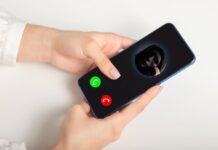The difference between a good or bad app more often lies in the quality of the overall user experience – a feat that can make or break your application entirely.
Introduction
The UI design is an integral part of any application. An efficient mobile UI design is what separates the mediocre from the truly successful ones; because knowing the ins and outs of your application through the lens of the end user can provide you meaningful insights on how to make it better from a firsthand perspective.
Any mobile UI design with half a mind to ensure a good user experience should have good functions from their point of view and be easy to use. In the oversaturated app market today, users demand a lot. From faster loading times, convenience of use, and overall sense of gratification when scrolling – they continuously raise their expectations the more they use it.
If you want your app to be successful, you have to consider UX to be not just a backhand aspect of design, but an essential component of product strategy that will set you apart from the rest. Consulting with UI UX design services can point you in that right direction.
When any user comes across an application in their default app store, the first thing they are most likely to notice is the overall design of the app; the font used for the logo, the shape of the buttons, the overall colour palette that compliments the entire user interface. These seemingly display aspects might not seem that important in the grand scheme of things, but they have an integral role in reeling potential users in.
Thus, app design plays a crucial role in the user’s decision-making process even before they download an app to their device. As the lockdown has furthered the exposure of digital mediums at large, UI design can make or break the success of almost any digital project.
Here are some things you need to look out for:
Brain power
With any successful app, you’d want to limit the amount of cognitive load or strain you force users into. Essentially, this means the amount of brain power required to navigate through your app, which should ideally be as minimal as possible.
The human brain has an innate limited amount of processing power, and when an app provides too much information at once, it might overwhelm the user and make them abandon the task altogether. Every time you add a button, image, or icon, you run the risk of making the optics look confusing to the viewer. Keep in mind you want their interest in your application to run as smoothly as possible, so try your best to utilize easy to understand guidelines and rules to follow.
Minimizing User Input
When it comes to mobile applications, typing on a small mobile screen can’t be the most comfortable inputting experience. It often leads to more errors, because of the limited frame of use.
You also want to keep forms as short as you possibly can, eliminating any extra or unnecessary fields that just add on to the user’s typing time. Ask for only the bare minimum, and as their tenure with your app grows, you can build up a more cohesive profile of the user as you go on.
Avoidance of jargons
One of the key elements to any efficient, smooth working UI is clear communication. This should always be at the back of your mind when in the development process and take precedence over much of the other aspects, because it will directly affect how your audience partakes in the app.
Use the existing data you have on your target audience to determine whether certain words or turns of phrases are appropriate to use in context, always bearing in mind the customer persona.
Consistent design
One of the fundamental principles of design is consistency. By knowing how to utilize it properly, you can eliminate any signs of confusion. Maintaining an overall consistent appearance throughout an app is encouraged.
You can do this by anchoring visual, functional, and external consistency. This means that from the typefaces and buttons to the inactive elements – they all need to be working under a similar design frame in all parts of the application. Through this, the user can learn to equate certain colours or fonts to specific uses.
Accessible interface
What might come off as a low-priority element to app development is actually one of the first things you need to take note of. Accessible design allows users of all abilities to use products successfully, whether they’re a preteen gifted their very first iPhone or a senior citizen holding on to their decade-long Samsung. It is also important to conduct an IMEI blacklist check if you are buying a used phone.
It’s also as important to take into consideration those with certain vision or hearing impairments. You have to factor in how users with vision loss, hearing loss and other disabilities can interact with your app and work towards making it more convenient and accessible for them.
Conclusion
Mobile applications designed without a designated UI or UX can more or less lead to their downfall. With the emergence of more digital platforms being utilized in this age of the pandemic, it’s even more important to factor in the overall user experience when you’re in the development process.



































